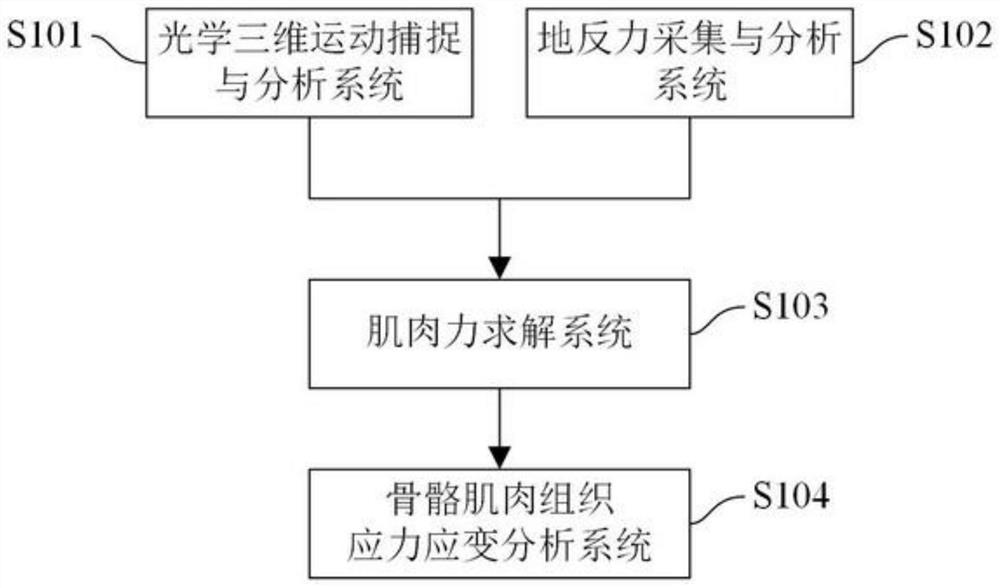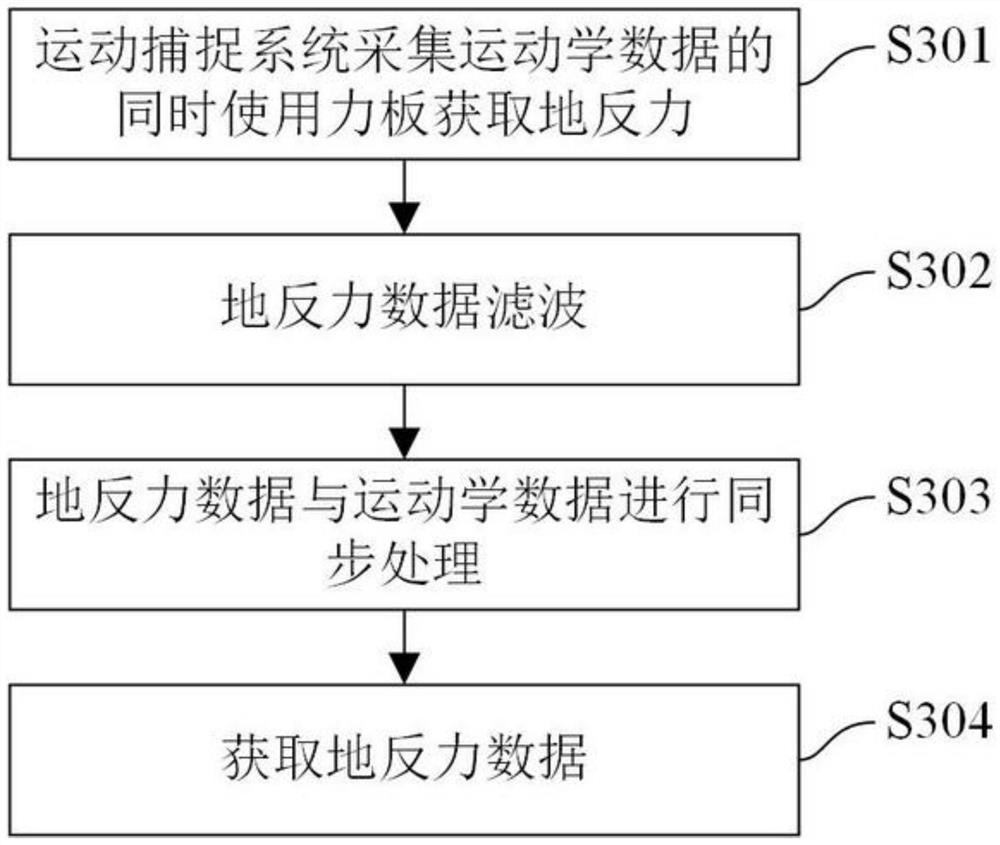Non-destructive analysis method for stress and strain of human skeleton muscular tissue based on in-vivo physiological movement
A stress-strain and muscle tissue technology, applied in the field of biomechanics, can solve problems such as simulation analysis of real stress and strain of the human body, inability to accurately calculate muscle force data, and myoelectric signals being easily interfered by external noise.
- Summary
- Abstract
- Description
- Claims
- Application Information
AI Technical Summary
Problems solved by technology
Method used
Image
Examples
Embodiment Construction
[0028] like figure 1 , figure 2 , image 3 , Figure 4 and Figure 5 As shown, a non-destructive analysis method of human skeletal muscle tissue stress and strain based on in vivo physiological motion, including an optical three-dimensional motion capture and analysis system, a ground reaction force acquisition and analysis system, a muscle force solution system, and a skeletal muscle tissue stress and strain analysis system .
[0029] figure 1 It is a flow chart of the steps of the non-destructive analysis method for stress and strain of human skeletal muscle tissue based on in vivo physiological exercise of the present invention, which is described in detail as follows.
[0030] In step S101, the kinematic data of the in-vivo physiological movement of the human body is obtained through an optical three-dimensional motion capture and analysis system, see figure 2 , the specific steps of step S101 are as follows:
[0031] In step S201, a multi-segment multi-rigid body...
PUM
 Login to View More
Login to View More Abstract
Description
Claims
Application Information
 Login to View More
Login to View More - R&D
- Intellectual Property
- Life Sciences
- Materials
- Tech Scout
- Unparalleled Data Quality
- Higher Quality Content
- 60% Fewer Hallucinations
Browse by: Latest US Patents, China's latest patents, Technical Efficacy Thesaurus, Application Domain, Technology Topic, Popular Technical Reports.
© 2025 PatSnap. All rights reserved.Legal|Privacy policy|Modern Slavery Act Transparency Statement|Sitemap|About US| Contact US: help@patsnap.com



